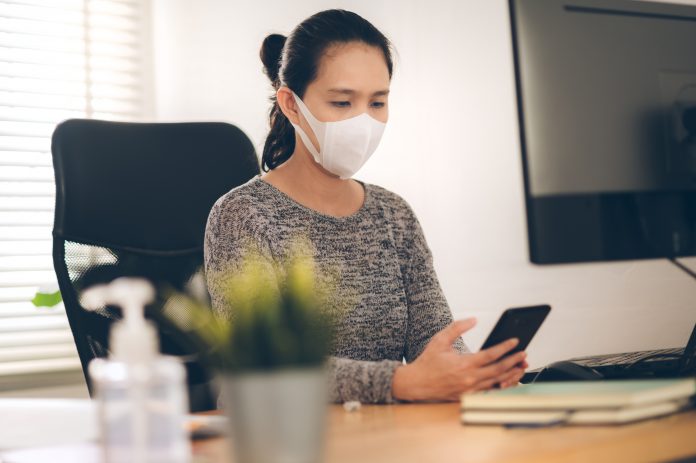Nick Wilson, Director of Health & Safety Services at Ellis Whittam, discusses the health and safety measures businesses in public and private sectors must now adhere to in light of COVID-19 when it comes to both the workplace and employers’ responsibilities for staff working from home
Without question, the current pandemic is one of the toughest obstacles British businesses have ever had to face, presenting not only an unparalleled health crisis but a potential economic crisis, too. Furlough and workforce complications aside, employers’ top priority will be keeping people safe, which means making a number of adjustments to your premises and practices over the coming months to ensure the threat is properly managed.
Indeed, while some businesses and organisations have been forced to close, health and safety legislation has not been suspended in any way, shape or form. In fact, certain areas of health and safety law have been expanded in light of the outbreak, including the requirement to report instances of COVID-19 – in certain defined situations – under the Reportable Injuries Diseases and Dangerous Occurrences Regulations 2013 (RIDDOR).
Crucially, and perhaps most worryingly for employers, the HSE has confirmed that it will take appropriate enforcement action – including, in the most extreme cases, prosecution – against employers found not to be complying with relevant Public Health England guidance, including guidance on social distancing. Furthermore, employees have been reminded of the mechanism to report any “genuine concerns” to the regulator, who will then investigate and take action where necessary.
In this way, there is a real pressure on employers to get it right – but it’s not an easy challenge. Suddenly, measures that were deemed appropriate are no longer adequate, premises that were previously thought to be low risk now have a potentially deadly virus to manage, and organisations that have never had to consider infection control as a major hazard before will now need to ensure they manage this risk.
Risk assessment
For those businesses that are legally allowed to open, the first step is to complete a risk assessment. COVID-19 is a biological hazard, and like any workplace hazard, control measures need to be put in place to reduce the risk of someone being infected. We would normally look to eliminate hazards where possible; however, in this case, removing the hazard isn’t possible. Instead, employers’ must introduce suitable and sufficient control measures to reduce the risk of contracting the disease to as low a level as is reasonably practicable. The assessment should, therefore, consider the following:
- How can you ensure a two-metre gap is maintained between employees and any other persons that may be affected by the work activity? Public Health England has provided several examples of how to implement social distancing in the workplace and practical solutions such as queue management and working side by side or with backs to one another.
- Are handwashing facilities in place, including hot and cold running water, soap and disposable hand towels? If these aren’t available, consider providing hand sanitiser.
- Are disposable tissues available to reduce the threat of transmission?
- Is there an effective action plan in place to deal with someone with suspected symptoms?
- How and when will certain areas and hand-contact points be disinfected to prevent spread?
- Can you display education pieces, such as symptoms charts and handwashing guidance, throughout the workplace to raise awareness and promote safe practices?
- How do you plan to monitor the health of employees and ensure the company/organisation remains up to date with the latest guidance?
- Are contractor management and visitors managed appropriately? Potential control measures may include only allowing essential work to take place, providing handwashing facilities, and ensuring social distancing is maintained.
Keeping staff safe from a distance
Of course, if you have reverted to homeworking, this brings with it its own challenges. A home working risk assessment will help you to identify and address any hazards and provide protection for your organisation. Think about:
-
Workstation set-up
While the HSE has clarified that temporary homeworkers do not have to complete a full DSE assessment, it’s a good idea to get homeworkers to assess their workstation to ensure it is comfortable and reduce the risk of long-term health problems. You should also check that space, lighting and ventilation are adequate and suitable for the homeworker’s needs.
-
Work equipment
If you have provided any electrical equipment to homeworkers, you are responsible for ensuring it is fit for purpose and maintained in the correct way. You will also need to consider the risks posed by the equipment when used at home.
-
Mental wellbeing
Remember, your duty as an employer extends to mental health. This is particularly important with respect to homeworkers due to the risk of isolation or failure to take proper breaks, with studies showing that working remotely can lead to insomnia and raised stress levels. Schedule regular check-ins, encourage staff to take breaks and try to lighten the load where possible.
Finally, don’t forget about premises that are either completely closed or partially occupied with a skeleton staff. There are still important health and safety checks to perform during this transitional period, including statutory checks and fire safety arrangements that will ensure the smooth return of staff once restrictions are lifted.
Most employers aren’t health and safety experts – so if you’re not confident going it alone, seeking professional health and safety support may offer reassurance and help you to identify sensible, proportionate controls. Thankfully, there are a number of helpful resources out there, including our own free Coronavirus Advice Hub, to help you to manage this period of upheaval and, ultimately, keep people safe.











